
A drum machine is an electronic musical instrument that creates percussion sounds, drum beats, and patterns. Drum machines may imitate drum kits or other percussion instruments, or produce unique sounds, such as synthesized electronic tones. A drum machine often has pre-programmed beats and patterns for popular genres and styles, such as pop music, rock music, and dance music. Most modern drum machines made in the 2010s and 2020s also allow users to program their own rhythms and beats. Drum machines may create sounds using analog synthesis or play prerecorded samples.

A jukebox is a partially automated music-playing device, usually a coin-operated machine, that plays a patron's selection from self-contained media. The classic jukebox has buttons with letters and numbers on them, which are used to select specific records. Some may use compact discs instead. Disc changers are similar devices for home use; they are small enough to fit on a shelf and can hold up to hundreds of discs, allowing them to be easily removed, replaced, or inserted by the user.
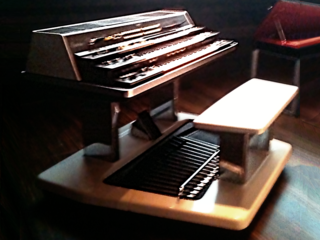
An electric organ, also known as electronic organ, is an electronic keyboard instrument which was derived from the harmonium, pipe organ and theatre organ. Originally designed to imitate their sound, or orchestral sounds, it has since developed into several types of instruments:
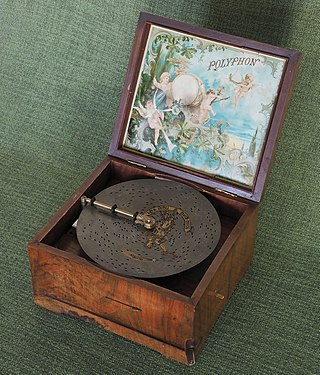
A music box or musical box is an automatic musical instrument in a box that produces musical notes by using a set of pins placed on a revolving cylinder or disc to pluck the tuned teeth of a steel comb. The popular device best known today as a "music box" developed from musical snuff boxes of the 18th century and were originally called carillons à musique. Some of the more complex boxes also contain a tiny drum and/or bells in addition to the metal comb.

A barrel organ is a French mechanical musical instrument consisting of bellows and one or more ranks of pipes housed in a case, usually of wood, and often highly decorated. The basic principle is the same as a traditional pipe organ, but rather than being played by an organist, the barrel organ is activated either by a person turning a crank, or by clockwork driven by weights or springs. The pieces of music are encoded onto wooden barrels, which are analogous to the keyboard of the traditional pipe organ. A person who plays a barrel organ is known as an organ grinder.
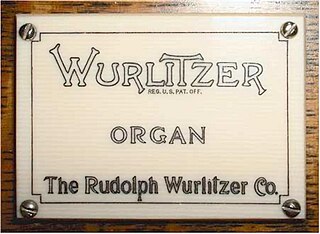
The Rudolph Wurlitzer Company, usually referred to as simply Wurlitzer, is an American company started in Cincinnati in 1853 by German immigrant (Franz) Rudolph Wurlitzer. The company initially imported stringed, woodwind and brass instruments from Germany for resale in the United States. Wurlitzer enjoyed initial success, largely due to defense contracts to provide musical instruments to the U.S. military. In 1880, the company began manufacturing pianos and eventually relocated to North Tonawanda, New York. It quickly expanded to make band organs, orchestrions, player pianos and pipe or theatre organs popular in theatres during the days of silent movies.

Orchestrion is a generic name for a machine that plays music and is designed to sound like an orchestra or band. Orchestrions may be operated by means of a large pinned cylinder or by a music roll and less commonly book music. The sound is usually produced by pipes, though they will be voiced differently from those found in a pipe organ, as well as percussion instruments. Many orchestrions contain a piano as well. At the Musical Museum in Brentford, examples may be seen and heard of several of the instrument types described below.

M. Welte & Sons, Freiburg and New York was a manufacturer of orchestrions, organs and reproducing pianos, established in Vöhrenbach by Michael Welte (1807–1880) in 1832.
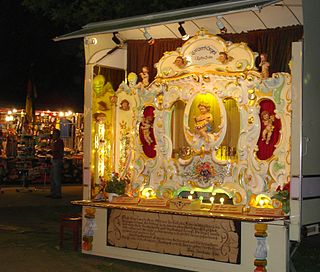
A fairground organ is a musical organ covering the wind and percussive sections of an orchestra. Originated in Paris, France, it was designed for use in commercial fairground settings to provide loud music to accompany rides and attractions, mostly merry-go-rounds. Unlike organs for indoor use, they are designed to produce a large volume of sound to be heard above the noises of crowds and fairground machinery.
Seeburg was an American design and manufacturing company of automated musical equipment, such as orchestrions, jukeboxes, and vending equipment. Founded in 1902, its first products were Orchestrions and automatic pianos but after the arrival of gramophone records, the company developed a series of "coin-operated phonographs."

DeBence Antique Music World is a museum in Franklin, Pennsylvania whose collection contains more than 100 antique mechanical musical instruments, including music boxes, band organs, player pianos, a nickelodeon piano, as well as a number of other antiques. Many of the collection's mechanical instruments are rare; a number are among only a few manufactured, and a few are among the last in existence. Although the collection's value cannot be measured, an offer for a sum of multiple millions of dollars was once rejected.

A street organ played by an organ grinder is a French automatic mechanical pneumatic organ designed to be mobile enough to play its music in the street. The two most commonly seen types are the smaller German and the larger Dutch street organ.

Quentin David Bowers is an American numismatist, author, and columnist. Beginning in 1952, Bowers’s contributions to numismatics have continued uninterrupted and unabated to the present day. He has been involved in the selling of rare coins since 1953 when he was a teenager.

The photoplayer is an automatic mechanical orchestra used by movie theatres to produce photoplay music to accompany silent films.

The Berlin Musical Instrument Museum is located at the Kulturforum on Tiergartenstraße in Berlin, Germany. The museum holds over 3,500 musical instruments from the 16th century onward and is one of the largest and most representative musical instrument collections in Germany. Objects include a portable harpsichord once owned by Prussia's Queen Sophie Charlotte, flutes from the collection of Frederick the Great, and Benjamin Franklin's glass harmonica.

The Musical Museum is a charity, museum and concert venue located in Brentford, London Borough of Hounslow, a few minutes' walk from Kew Bridge railway station. Its stated purpose is to conserve, preserve, and develop nationally important collections related to the history of music reproduction; inform, engage and entertain the public regarding the evolution of music reproduction; and conserve, preserve, promote and present the theatre pipe organ as an instrument with a significant role in the development of light music on radio and in the cinema and as a musical art form.
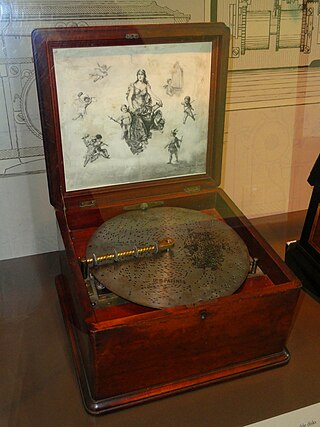
The Regina Company was a manufacturer of mechanical musical instruments before it became a major vacuum maker.

Gulbransen Company was a musical instrument manufacturer of player pianos and home organs in the United States. It also made reed organs. It was originally established in 1904 by Axel Gulbransen as Gulbransen Piano Company.

The Virginia Musical Museum is a museum located in Williamsburg, Virginia, United States. A collection of over forty years is combined with donations from famous Virginia music artists. Making up the museum are rare, antique musical instruments, mechanical music machines, phonographs and many personal items from Virginia artists. The museum opened its doors to the public on June 22, 2013.
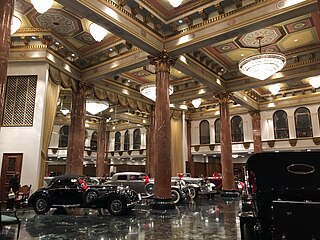
TheNethercutt Collection is a multi-storied museum and car collection complex located in Sylmar, California. It was founded by J.B. Nethercutt in 1971 and its centerpiece is the prestigious automobile collection of the Nethercutt–Richards family that contains over 250 cars, nearly all of which J.B. originally collected and owned. It is widely regarded as one of the greatest car museums in the world.§























